#emperor kangxi
Explore tagged Tumblr posts
Text
❁ Zhao Bin as Emperor Kangxi in Love In The Imperial Palace (EP1)













#love in the imperial palace#the flowers filled the palace and missed the time#zhao bin#kangxi emperor#emperor kangxi#aisin gioro xuanye#madeintrina#qing dynasty#perioddramaedit#gifshistorical#cdramaedit#guzhuangappreciation
8 notes
·
View notes
Photo
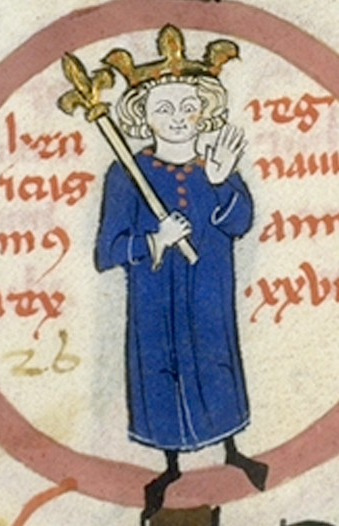

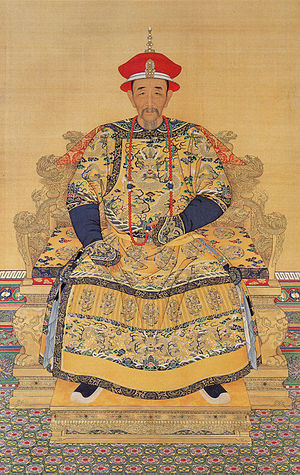
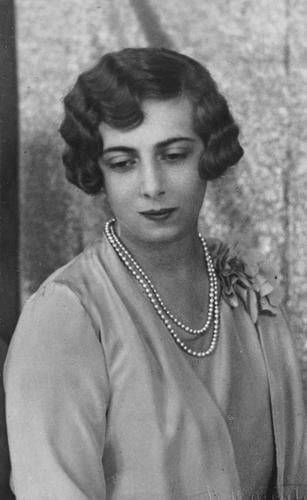



Royal Birthdays for today, May 4th:
Henry I, King of France, 1008
Chhatrasal, Maharaja of Bundelkhand, 1649
Kangxi Emperor, Emperor of China, 1654
Katherine, Princess of Greece and Denmark, 1914
George Tupou V, King of Tonga, 1948
Pauline Ducruet, Daughter of Princess Stephanie, 1994
Henrik, Count of Monpezat, 2009
#henry i#kangxi emperor#pauline ducruet#katherine of greece and denmark#Chhatrasal#George Tupou V#count henrik#long live the queue#royal birthdays
25 notes
·
View notes
Text
This pair of mould-made porcelain lion-dogs or ‘dogs of fo’ are shown standing on leaves with their mouths open and tails erect. The lioness is painted green with an aubergine mane and a yellow cub climbing her right leg. The lion is yellow with a green mane and moveable green brocade ball beneath his left paw; his eyes wobble on stalks. At the back are tubes for incense sticks. These were made as curiosities for a scholar’s desk to perfume the room but were very popular in Europe in the 18th century.
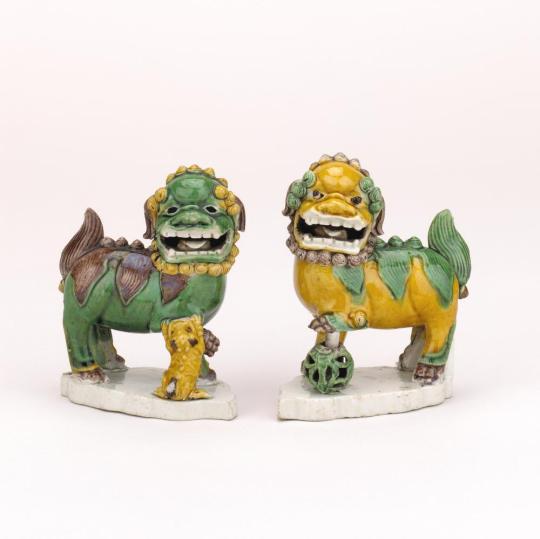
▪︎ Pair of lion-dogs or ‘dogs of fo’.
Period: Qing dynasty; Reign of Kangxi
Date: 1662-1722
Place of origin: China: Jiangxi (province); Jingdezhen
Medium: Porcelain
63 notes
·
View notes
Text
I think the background story Vein made up for Cheng Xiaoshi when he enrolled him in Wang Qing’s therapy session is supposed to be a funny reference to the “Nine Heirs Competing for the Throne” 九子夺嫡 incident from the Qing Dynasty.
Basically, Emperor Kangxi had nine adult sons who, towards the final decades of Kangxi’s life, all competed for the throne, leading to brothers turning against each other, attempting to ruin (and even kill) one another. And after he died, the fourth son Yinzheng succeeded and became Emperor Yongzheng and suffered from a lifetime of paranoia because he felt unloved and betrayed by most of his family, especially his own parents, after this experience.
(However, what usually gets left out of this short version of the story is that Yinzheng had one brother who remained loyal to him from the beginning, and became his must trusted partner until passing away from illness . And the grief from the loss of this brother drove Yinzheng a bit insane…)
#link click#link click spoilers#yingdu chapter#yingdu arc#yingdu spoilers#I am a huge Emperor Yongzheng fan#and was delighted to see the reference
140 notes
·
View notes
Text
Ping Jinchuan: A 19th century Sci-fi Shenmo Novel
Like all popular novels, when something sets a trend, many imitators follow suit, until the formula becomes its own genre of sorts.
FSYY is one such genre setter. Specifically, the "Battle of Arts" (斗法) formula, where immortals and deities are added into a historical event——usually a war, but it can also be something like Admiral Zheng He's voyage——and proceed to use said setting as an excuse to battle it out using spells, magical treasures, and formations.
It's such an enduring formula, late Qing novels were still following it. And because it's the 19th century, western technology and ideas were entering China and making their way into popular culture.
My first exposure to the results comes from Legends of the Eight Immortal Attaining the Dao (八仙得道传), where the narrator occasionally interrupts the story and goes: "Electricity-based technology is totally the work of Mother Lightning, guys!"
Why am I telling you all these random facts? Because Ping Jinchuan ("Quelling the Golden Stream") is that, but turned up to eleven.
Technically, FSYY is set in Shang dynasty China. Technically, Ping Jinchuan is an obscure 1899 novel about the quelling of rebellions in Qinghai and Tibet during the 18th century by the historical general Nian Gengyao.
However, considering that FSYY has 11th century BCE gunpowder weapons, and...the entirety of Ping Jinchuan, I really doubt the claim of the latter novel's author that the story is based on the eye witness accounts of his ancestor, who worked as an advisor under Nian Gengyao.
But if you insist, here's a rough summary of the historical background: the first war Nian fought in Tibet happened during the reign of Kangxi, because the Dzungar Khanate invaded Tibet.
The second rebellion Nian quelled in Qinghai, during the reign of Yongzheng, was started by Lobzang Tendzin. He fought against the Dzungar Khanate with the help of Qing army, but rebelled together with local chiefdoms and Mongol leaders when he was not granted the rulership of Tibet afterwards.
(Confusingly enough, during the reign of Qianlong, there were also 2 other rebellions by the chieftains of "Greater and Lesser Jinchuan" in northwestern Sichuan, which might be where the novel's name came from.)
Naturally, the novel proceeds to tell a "Battle of Arts" story, about Tibetan Buddhist monks, Muslims, Daoist sages, and the leaders of the Roman Catholic Church duking it out with typical Shenmo novel treasures...and 19th century magitek.
There is potential for some serious analysis about Qing military expansion, violence on the frontiers, how foreign religions and people are perceived through the framework of popular fiction, etc. But honestly, after seeing the above summary, are you really here for *that*?
I'm not, because I don't know nearly enough about the historical context, and the entire premise is ridiculous enough to defy any attempt at taking it seriously——unless the attempts are ironic.
Case In Point
The novel starts off pretty tame: Lobzang Tendzin, "King of Jinchuan", wanted to send his own Dalai Lama candidate to Tibet after the previous Dalai's death, as part of a power ploy to make himself the de facto ruler of Tibet.
He allied himself with Galdan, the Dzungar ruler, to force the Tibetans to accept his candidate at gunpoint——literally.
Their firearms and cannons got stopped by a Lama named Ding Chan, who used his meditation power to summon divine warriors and fend off the first wave of attack.
However, his meditation was broken by the plight of Jinchuan soldiers disguised as female refugees, and later, Galdan assassinated him in his sleep with a firing squad during a treaty talk organized by the Qing.
Emperor Yongzheng was not happy and sent Nian Gengyao and Yue Zhongqi to quell the rebellion. Also, Nian is actually the Heavenly Dog Star incarnate, who learned martial arts, classics, war strategy, and all sorts of neat stuff in his youth from a poor Buddhist monk.
Later, said monk and Yue's master sent a bunch of their disciples to Nian and Yue as reinforcement, before the battle began.
Then, in Chapter 4, Nan Guotai was introduced as the fictional son of the historical Belgian missionary, Ferdinand Verbiest. Nicknamed "Little Lu Ban", he was well-versed in the arts of western machinery and firearms, and the first sign of the story going completely off the rails.
The first "Battle of the Arts" round was pretty standard——Five Phase Formation, magical breaths, treasures. But Nan was ordered to make 15 "mechanical carts" that could produce flames, in conjunction with a field of landmines, to assist in the breaking of the Five Phase Formation.
Despite the similarity, they aren't tanks, but more like...trapped cargo trailers/RVs. Basically, they had "doors and windows" with built-in mechanisms that only allowed entry into the carts and could not be opened from the inside, and once the enemies were trapped, the carts became giant incinerators.
After losing the first round, the King of Jinchuan put up a recruitment poster for "talented followers of the Three Religions"...except the Three Religions weren't Buddhism, Daoism, and Confucianism, but Islam, Buddhism, and Daoism, since the story is set in Qinghai, where there was a notable population of Hui people (Chinese Muslims).
After seeing the poster, Galdan's wife decided to seek help from her own master, the Patriarch of the Snowy Mountains. He is a Muslim sage with 12 powerful disciples...who all wielded typical Daoist treasures.
They all got overshadowed by the next round of Steampunk Shenmo Battle, though, when an unrelated Daoist showed up with his trump card: "Strong Water", a.k.a. magical hydrochloric acid.
The magical HCI was then put into giant glass syringes and fired at Nian's troops, resulting in significant casualties. To bypass the HCI syringe cannons, Nan unrevealed his latest invention: the Skysoar Orb, a.k.a. hot air balloon.
The Qing troops then mounted firearms and cannons onto the air balloon, flew it above Galdan's camp to a height where the HCI syringes couldn't reach, and started shooting. However, they were all mortals, and got decimated when the enemy immortals flew up to take control of the balloons, forcing an emergency landing via needles.
After that, the hot air balloon was manned entirely by immortals, until Galdan covered his camp in a mesh of barbed wires, blocking the aerial fire but also making it impossible for him to use his own HCI syringes.
Then a little 13 years old immortal, Gengsheng the Acolyte, joined the Qing army, who's the reincarnation of the Lama executed by Galdan's firing squad. Abandoned at birth and adopted by a Daoist master, he was able to fly on clouds since he was 8-9 years old, which he used to travel to Europe.
While he was there, a Swedish sage gifted him a powerful treasure——the Electricity Whip, which can be used to electrocute people to death...but also magically heal injuries with its currents.
I have trouble visualizing the thing. Is it a literal whip of lightning arcs (since it's described as being able to turn into a white beam), a taser, an electric cattle prod, a plasma whip, or the unholy lovechild of all the above plus a tesla coil?
Hilariously, the Electricity Whip treasure of the Nikola Tesla Sect (/sarcasm) stopped working when exposed to "dirty stuff" such as a woman's magical handkerchief. Classic folk magic style.
After a bunch of boring fighting sequences, 6 of the 12 disciples of the Patriarch decided to get the big formations out, which were broken by buckets of pig blood.
…Yeah, that's pretty much the extent of the author's understanding of Hui customs and Islam. (sigh) The surviving disciples went to get the Patriarch for help, who casted an AOE spell of poisonous smoke, water and fire to block the Qing troops' path...
Annnnnd Nan to the rescue again! With the help of Nian Gengyao's monk master, he built the Earth Travel Cart: a magitek subway train shaped like a pangolin, able to carry a hundred people and move a hundred Li per hour. It didn't need rails, you just dug a hole in the ground, put the train in, and it started tunneling through the earth on its own.
The entire army used 500 of these magical subway trains to bypass the Patriarch's AOE spell coverage, forcing them to retreat to their home base, Tianshan (Heavenly Mountain). Which is a real mountain range in central Asia and Xinjiang province, and going there from Qinghai is plausible. Kinda.
I'm still skeptical about the novel's claim that the path through Tianshan is the only path leading into Jinchuan proper, but whatever.
The Patriarch put his most powerful formation on said mountain pass——the Ice Freeze Formation, which will insta-freeze immortals, mortals, and flying birds alike when they step in range.
Then comes the craziest part of the entire novel. Honestly, everything after this chapter is pretty boring and formulaic, which makes it the perfect note for this article to end on.
Nan suddenly revealed that the current Roman Pope is the grandson of Matteo Ricci, who's the mentor of Nan's dad, and took his hot air balloon to Rome to get reinforcement. To no one's surprise, the Pope's treasure is a cross.
The Pope agreed and took his 12 disciples——supposedly because it's the same as the number of apostles——to the snowy mountain.
He gave a cross and a white candle to each of his disciples; they walked straight into the Ice Formation and broke it by holding the two holy objects up in the air, while loudly chanting (a highly localized translation of) "Hail Mary!"
After making his grand entrance, the Pope neutralized the Patriarch's spell attacks and turned his last disciples' army of soldiers back into their true forms——a bunch of farm animals.
He then told the disciples that as the Roman Pope, he had authority over "Russia, England, France, Netherlands" and all the European nations, and he'd leave the Patriarch to mind his own business if he surrendered and stopped interfering in the war.
Three of the four examples he gave aren't even Catholic, but maybe the Protestant Reformation just never happened in this novel's 18th century world because Pope Magic.
The Patriarch accepted the cease-fire treaty, went back to teach his religion to the population of northwestern China, and that's pretty much it. His last female disciple (Galdan's wife) got her troops' firearms neutralized by the Pope's cross, taken prisoner, and executed by Nian.
After revealing that the Qing immortals' power also came from the Grace of Our Lord and Savior, and that was why westerners couldn't use spells (but could make electricity-based treasures?), the Pope flew back to Rome on Nan's air balloon, exiting the novel once and for all.
Which is a pity, because in the second half of the novel, one of the defeated foes escaped to (Ottoman?) Turkey to beg their king for reinforcement, and the Russian Tsar agreed to help the Jinchuan troops to make his French wife happy. I want my Papal 13 vs. Russian Orthodox Bishops Shenmo battle, dammit!
Food for thought: if the Pope was Matteo Ricci's grandson, and Matteo Ricci was also a mentor of Ferdinand Verbiest, Nan's dad (historically, Ricci died 13 years before Verbiest was even born)...
...Is this a timeline where the Jesuits won the Rites Controversy, Ricci cultivated himself into the first Catholic immortal, and ushered in the age of Syncretic Daoist-Catholic Steampunk?
#chinese folklore#chinese literature#steampunk#chinese novels#catholic church#daoism#buddhism#chinese history#islam#matteo ricci#jesuits#qing dynasty#investiture of the gods#fengshen yanyi#how do you even tag this novel#the sheer unhinged fun of it all
49 notes
·
View notes
Text
Qing Dynasty Harem
The harem system during the Qing Dynasty was one of the simplest ones in Chinese history, having only eight ranks. Despite only having eight ranks, the number of imperial consorts an emperor could have varied from emperor to emperor, with the Kangxi Emperor having 79 imperial consorts and the Guangxu Emperor having one empress and only two consorts.
Eight Ranks during the Qing Dynasty:
Empress (皇后; huánghòu)
Imperial Noble Consort (皇貴妃; huángguìfēi)
Noble Consort (貴妃; guìfēi)
Consort (妃; fēi)
Concubine (嬪; pín)
Noble Lady (貴人; guìrén)
First Class Attendant (常在; chángzài)
Second Class Attendant (答應; dāyìng)
During the Qing Dynasty, there were limits on how many imperial consorts could hold the ranks of concubine and above. An emperor was allowed 1 Empress, 1 Imperial Noble Consort, 2 Noble Consorts, 4 Consorts, and 6 Concubines. The ranks of Noble Lady and below were allowed to be held by any number of imperial consorts.
If a women held the rank of concubine or above, would be given a residence in the main part of the palace she lived in and would be addressed by all those ranked below her as “your imperial highness (娘娘; níangníang).
Only the Empress was considered the Emperor’s legal wife, all other women were considered concubines. The rank of Imperial Noble Consort was considered a deputy Empress, so an Emperor usually only promoted a woman to this rank when the Empress needed help managing the harem, a Noble Consort was deathly ill, or the Empress was dead and someone needed to be in charge of the harem.
After an Emperor’s death, his still living concubines would be promoted to Dowager ranks. If his Empress outlived him, she would be promoted to Empress Dowager and be known as Imperial Mother, Empress Dowager even if she wasn’t the new Emperor’s biological mother as Empress’s were seen as the mother of all imperial heirs. A biological mother of the new Emperor would also be promoted to Empress Dowager and be known as Holy Mother, Empress Dowager. If the biological mother of the new Emperor was already deceased she would posthumously be honored as an Empress. Empress Dowagers who lived through the reigns of two subsequent emperors would be called Grand Empress Dowager.
71 notes
·
View notes
Text
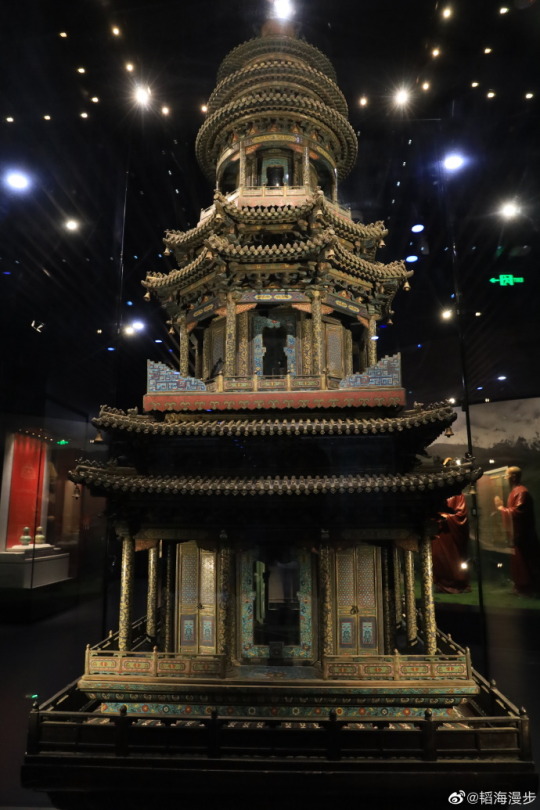
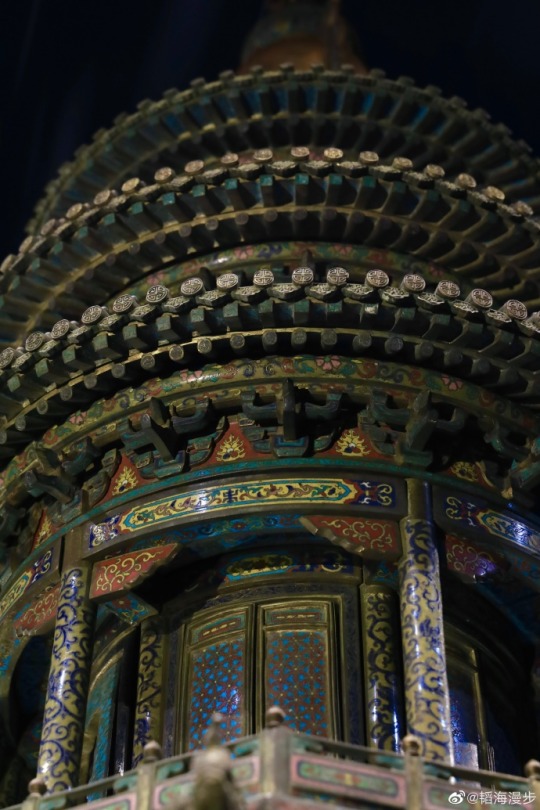
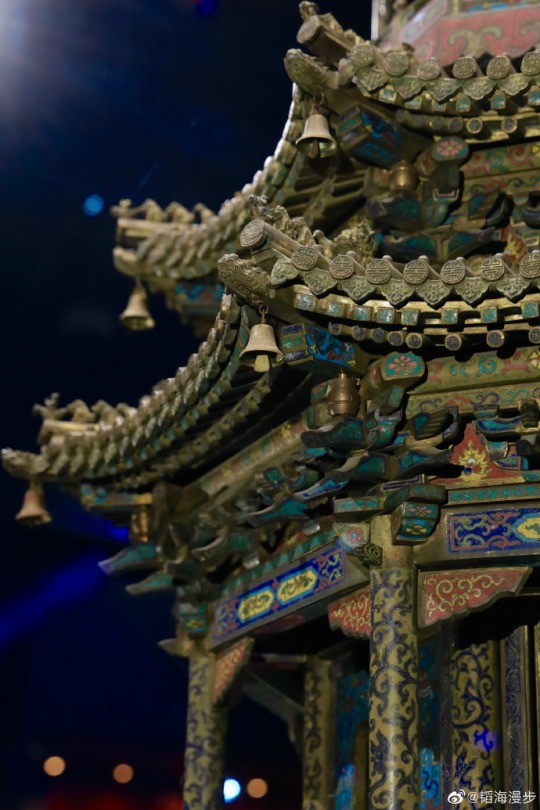
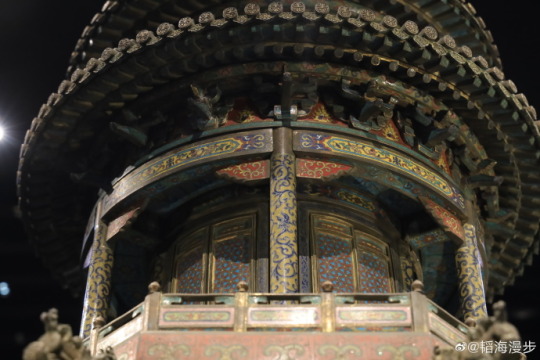
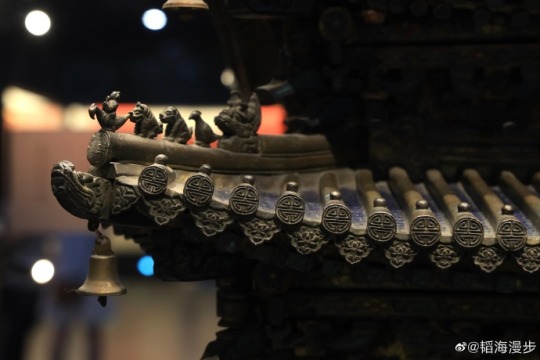
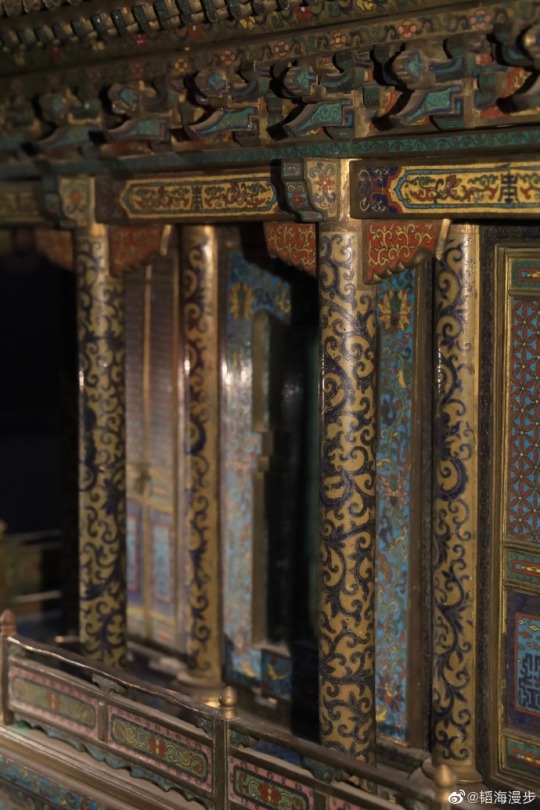
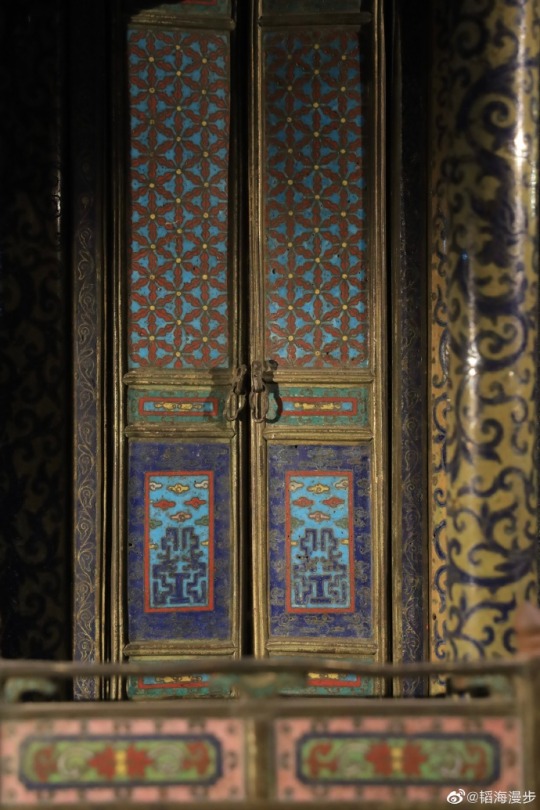
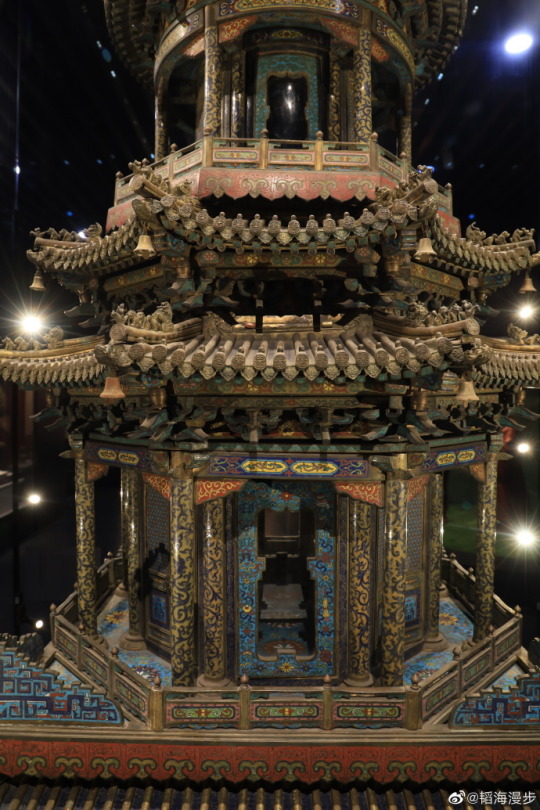
Exquisite enamel pagoda from the Qing dynasty Palace Manufacturing Office (造辦處), a special institution to fashion articles for the Imperial Court, established during the reign of Emperor Kangxi.
From the very beginning, the pagoda was placed in the Xumi Fushou Buddhist Temple (須彌福壽之廟) in Chengde, Hebei. However, later, in order to preserve the fragile enamel from the corrosive impact of natural factors, it was moved to the building. Now on display in Chengde Museum (承德博物館).
Photo: ©韬海漫步
#ancient china#chinese culture#chinese art#qing dynasty#chinese architecture#chinese temple#buddhist temple#buddhism#buddhist#religious art#enamelware#enamel#kangxi#pagoda#miniature art#chinese miniatures
54 notes
·
View notes
Text
the great thing about the three musketeers is you could plop them in the court of the kangxi emperor and literally nothing would change. they’d be thriving
18 notes
·
View notes
Text
In the 1670s, the Jesuit astronomer Ferdinand Verbiest — after a lengthy rivalry with Chinese astronomer Yang Guangxian that saw both men thrown in jail (!) — impressed the Kangxi Emperor by defeating Yang in an astronomy-prediction contest. The emperor then tasked Verbiest with revamping the imperial observatory, where he installed the latest instruments:

These instruments remained in Beijing for a long time — here’s an 1875 photo of them, still intact at the observatory:

{WHF} {Ko-Fi} {Medium}
167 notes
·
View notes
Note
Hi, could you talk about the marriage of imperial princes? Specifically the children of the current emperor. We can see this in Ruyi (it's been a while since I watched and forgive any mistakes) when Hongli was still a prince he had the ability to "choose" his wife, no matter how much Noble Consort Xi influenced him to choose Lady Fucha. Later we see him agreeing to Noble Consort Jia's request to marry Yongcheng to Prince Heyi's daughter, I can't forget Yonghuang who was resentful that his wife was from a lower flag. So I had this doubt, why did some princes have this opportunity to "choose" while others didn't?
sorry for my english
Well, choose is a strong word.
There is a distinction between the circumstances where Hongli chooses his wife and Yongcheng choosing his wife.
Ok, the ceremony we see where Hongli(‘s mother) choose Langhua, Xiyue and Hongli chooses Qingying as his wife is part of a much larger ritual, called xuan xiunu (selecting honoured ladies). Xuan xiunu is a ritual that takes place every three years, and in dramas it’s usually to select new concubines for the emperor (i.e. how Zhen Huan, Meizhuang et al. were selected). However, in reality, xuan xiunu is not just to choose wives for the emperor, it’s a much more complex process to select:
Yes, potential new concubines for the emperors
But also wives for princes and imperial relatives who the emperor may want to bestow (usually political) marriages on
But also high ranking maids to serve in positions close to women of the imperial family, including current consorts, consort dowagers, empress dowager etc. There are levels to being palace maids, and the highest level dealing closely with ranked persons would be more akin to positions of ladies in waiting, which in western history were also high-ranked women chosen to serve the Queen (in this case also high ranking imperial consorts and the empress).
(Contrary to what is portrayed in dramas, you can't just beat palace maids to death nilly willy with no repercussions like Hua Fei with Fuzi, especially maids who were serving close to higher ranks. There are consequences - see Qianlong's Dun Fei.)
There is a short subplot early in Bu Bu Jing Xin where Ruoxi, the daughter of a general and sister to the Eighth Prince’s secondary consort, is supposed to be a candidate in the xuan xiunu ceremony. While the Eighth Prince was able to use his connections to get her out of the list to be potential concubine to the emperor (Kangxi) and for marriages to the princes, she was nevertheless chosen for a guannuzi position serving the emperor himself.
(There’s a whole comedy of errors where the goal actually was to get Ruoxi to be not chosen for any position at all, but then too many princes suddenly took an interest in getting her out of lists that the consorts dealing with the selection started getting suspicious and competitive among themselves on who gets to keep her and then she becomes the emperor’s maid anyway, which they had been desperate to avoid because even though Kangxi hasn’t shown any romantic interest in Ruoxi, never say never.)
Guannuzi is a position that can potentially become a concubine to the emperor – a palace maid raised to the position of guannuzi can wait on the emperor overnight and in harem drama it’s equal to basically becoming the emperor’s concubine in all but name. Yu Ying’er and Songzhi in Legend of Zhen Huan were both raised from palace maids to guannuzi for this reason. But in BBJX it’s made clear that the position itself doesn’t have to be a concubine position, and Ruoxi was just the emperor’s tea maid.
High ranking maids like Ruoxi (and I guess dowry maids of the consorts we see in dramas like Ruyi and Zhen Huan) could be bestowed good marriages later as reward for their service as well.
Anyway. Back to Hongli. His wives were chosen in the xuan xiunu ceremony because the time of marriage happened to fall on the same period as a xuan xiunu ceremony was taking place. And by the time you get to that shortlist who gets to meet Xi Fei, there has already a whole load of selection and cuts being made off-screen. Everyone knows going in that both the Emperor and Xi Fei thinks Langhua is most suitable and the whole selection on Hongli’s part is jus ceremonial. He probably deludes himself into thinking he did have a right to choose Qingying/Ruyi if he wanted to, but honestly it would have been a bad move politically. At that point, even Yongzheng probably didn’t want him to choose Qingying, who has already been rejected by Hongshi. If disaster hadn’t struck with Hongshi and Ruyi’s aunt at that point, driving Qingying’s family into disgrace, if Hongli had insisted on choosing Qingying in that moment against his mother’s clear wishes, Xi Fei wouldn’t be able to say anything against it as at that point, Qingying was the empress’s niece. But it would not have been a good political move on his part and would have made things bad for Qingying anyway.
With Yongcheng, he is of an age to be married, but no xuan xiunu ceremony was due any time soon, in that case the emperor can just choose someone(‘s daughter) that he knows to bestow in marriage on his sons – same for Yongqi. Yuyan knew that Qianlong was thinking about Yongcheng’s marriage at that point, so she not so slyly suggested who she wanted, without realising that she was challenging the emperor in doing that and showing herself to be too arrogant for her own good. I think the idea was that Qianlong had someone lower in mind for Yongcheng but Yuyan thought that only a woman descended from Kangxi’s daughter was suitable. Yongcheng didn’t resent his wife for being lowborn, he resented his wife for being too high born and feeling like she shouldn’t be paying respect to a disgraced concubine, even though she still owes that to Yuyan as her mother in law regardless.
I think in the novel, Qianlong also deliberately chose women from lower ranking clans for both Yonghuang and Yongqi in hope that it would not make it too obvious how he was considering them both at different points as heirs (probably learning from his own situation where it was obvious where he was headed with Langhua being chosen as his consort), but it was Yonghuang that had a problem with that as well IIRC.
24 notes
·
View notes
Text
❁ Wang Qing as Princess Rongxian in Love In The Imperial Palace (EP1)









#love in the imperial palace#the flowers filled the palace and missed the time#madeintrina#wang qing#princess rongxian#kangxi emperor#qing dynasty#perioddramaedit#cdramaedit#gifshistorical#guzhuangappreciation
11 notes
·
View notes
Text
Every night I dress as the ghost of the Kangxi Emperor and sneak into Xi Jinping's bedroom to whisper "Retake Manchuria. There's never been a better time" into his ear while he sleeps.
3 notes
·
View notes
Text
Today's apocryphal Sun Tzu quote
Your thoughts can still reach your friends. Even if they are far away and sometimes even long ago.

Wang Hui (1632-1717) - The Kangxi Emperor's Southern Inspection Tour, Scroll Eleven: Nanjing to Jinshan. 1698, AD.
27 notes
·
View notes
Text
the malleus maleficent favorite monarch (why yes i am procrastinating on classwork how could you tell) is the Kangxi Emperor, an early emperor of the Qing Dynasty. he reigned from the late 17th to the early 18th century, reigned like 40-something years. he's the longest reigning monarch in chinese history, and subsequently one of the longest ruling monarchs in the recorded history of the world.

he was a real renaissance man, could write poetry, was a mathematician and a cosmopolitan, also he left behind to the world his diary which is SUPER fascinating. his diary was never meant for publication so it's a miracle it's survived this long, you can see his profound sadness as he gets older and as all of his friends and family die off (kangxi lived to be extremely old). at one point he writes, as the time near his life ended, that he's in pain all the time but he can't stop working because of his duties to the empire. also at that time in his life he writes about how his friends and trusted ministers are all dead and that he outlived his lovers and loved ones, how he didn't recognize the people he lived and worked with anymore, how lonely he was. honestly it was so devastating it's hard to read. really fascinating and intimate insight into who was, at that point in time, debatably the most powerful man in the world
he was also a cartographer! he'd personally visit sites for construction and make the maps for his builders to reference when building. and he'd philosophize at length with european missionaries so he's one of few chinese monarchs that we have a lot of direct western insight on. here's a painting of kangxi fiddling with western jesuit astronomical tools

kangxi would eventually ban the prosyletizing of catholicism as a result of a scandal, but he did exchange a lot of knowledge with the jesuits before then. so much so, that he learned how to play the piano!
perhaps kangxi's most important accomplishment was ending the War of the Three Feudatories, a civil war caused by the lingering dissent of Ming Dynasty loyalists. however i don't find that as interesting as his penchant for knowledge. while kangxi is celebrated for ending this civil conflict, kangxi personally considered it one of his greatest failures. he thought he took way too long for him to end it through his own mistakes, and he reprimanded himself endlessly for it in his memoirs.
anyways he's a really cool guy. if you like history and are interested in learning about eastern history, i think it'd be hard to find a better figure to start with than kangxi
2 notes
·
View notes
Text
I now find myself reading letters by French speaking missionaries writing home about the court of Yongzheng, and in particular on Prince Yi’s keen interest in European affairs. One letter mentions how the Prince asked this missionary to keep him up to date on Russia’s invasion of Poland, Turkish interests in the Mediterranean Sea, and the political affairs of all the countries along the sea and land routes between China and continental Europe...
It’s the 1700s. Emperor Kangxi was learning latin for fun and believed drinking hot chocolate (gifted by a Portuguese diplomat) was good for one’s health. The former crown prince’s uncle was a Catholic convert, and often got into heated debates with his nephew, a devout Buddhist. The third prince learned several European languages from his foreign tutors (and spoke them rather well, according to the tutors), but his true passion was in creating and publishing anthologies of old Chinese literature. Emperor Yongzheng’s best subject in school was geometry, also learned from a European tutor. He also dabbled in meteorology and geology, and tasked his foreign advisors with procuring for him the latest measuring devices and inventions from Europe. Prince Yi, who was well informed of European affairs and had an eye on the lucrative potentials of international trade, successfully pushed through measures to open up China’s sea ports for international trade and was interested in sending diplomatic missions to France…
Unfortunately, both Prince Yi and Yongzheng died all too young and all too soon, before they could implement most their foreign policy plans. The new emperor closed the borders, repealed many of Yongzheng’s reforms, and put out the brief spark of interest in exploring, trading, and exchanging knowledge and technologies with distant peoples that had emerged under Yongzheng’s rule. It would be another hundred years until China emerged from its isolation…
2 notes
·
View notes
Text
Nail Guards

If you’ve ever watched a c-drama set in the Qing Dynasty harem then you’ve seen the fabulous women of the court with their long nails and their beautifully decorated nail guards.
The nail guards, referred to as zhijiatao (指甲套) or huzhi (护指), originated sometime during the Ming Dynasty and would become extremely popular during the Qing. It was believed that the length and style of a person’s nails reflected their social status, the longer your nails and the more elaborate your nail guards the wealthier you were.

Nail guards would be made from a variety of precious materials such as jade, gold, and silver and would be decorated with a wide array of symbols and patterns. They would range in length from just 3 cm up to 15 cm and typically would be worn in pairs on the fourth finger and pinky of each hand. Some sources suggest they would be worn on every finger but the thumb, but this seems unlikely as it would be a major hindrance to the wearer.

While they didn’t grow their nails to the length of women, and thus didn’t wear nail guards, we have portraits of men showing they also grew their nails out. Portraits of the Kangxi Emperor show his nails being quite long.

16 notes
·
View notes